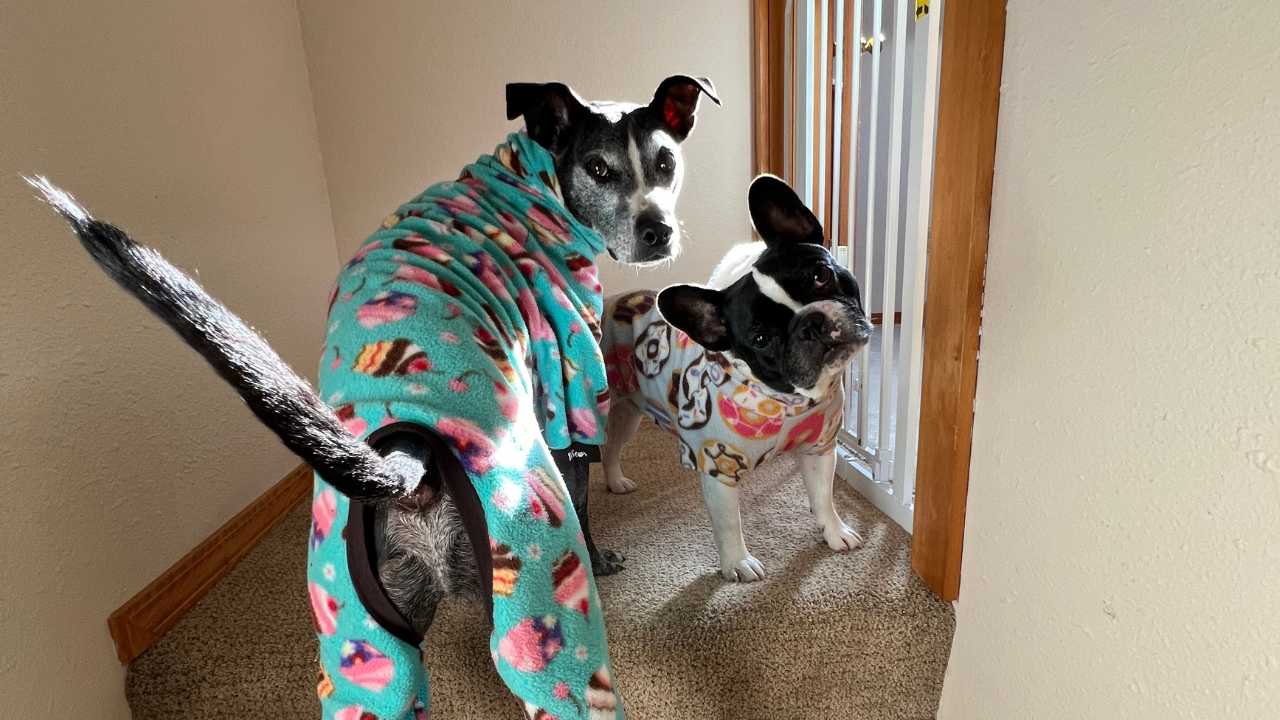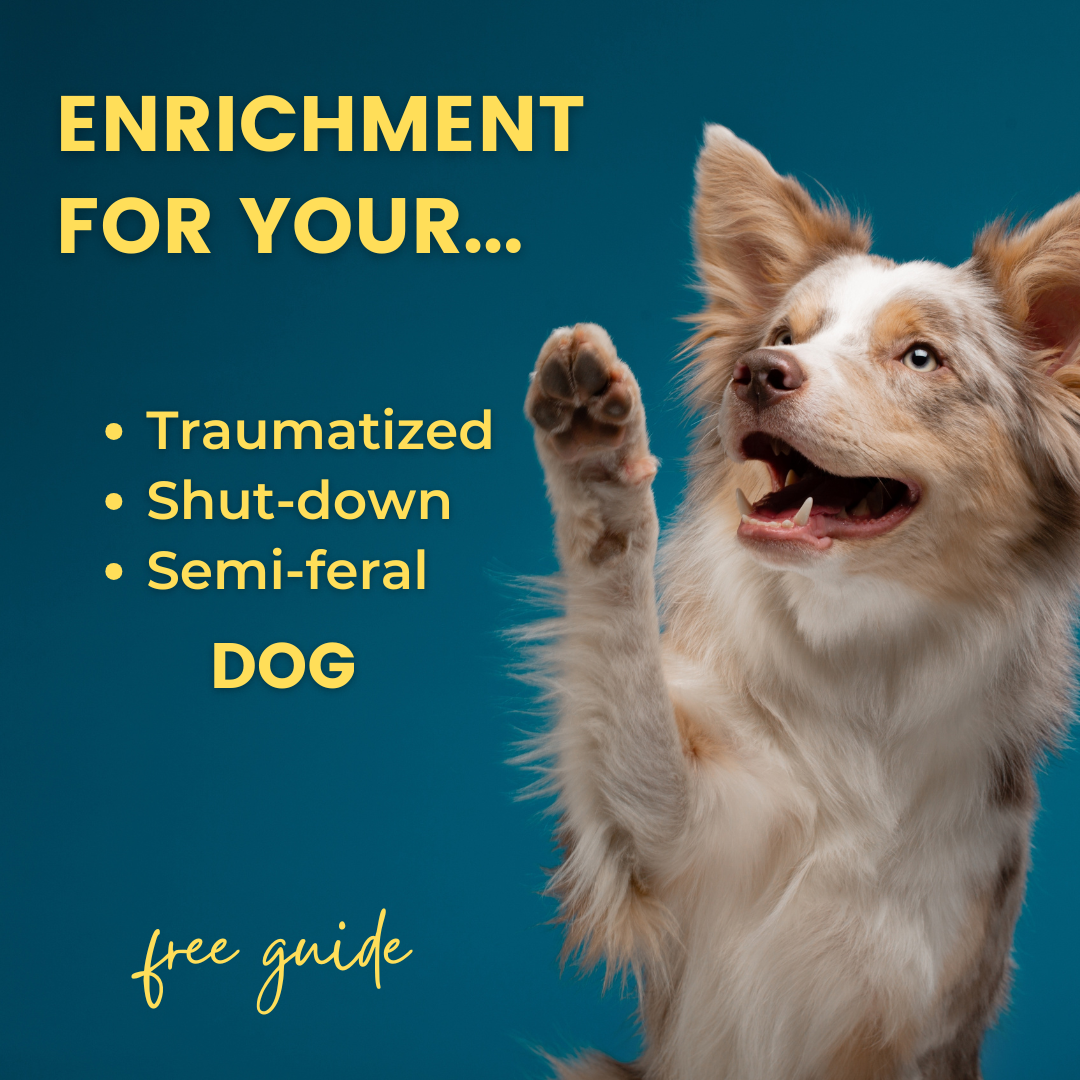Equipment and Gear For Keeping Your Fearful Dog Safe
Nov 14, 2022
If you have a fearful dog, you might have spent some time worrying about what could happen if they got loose, and got lost. This is a legitimate worry! Scared dogs can be VERY hard to find and catch once they're loose.
In this blog installment, I give you recommendations for keeping your fearful dog safe and secure both inside and outside the house. Whether you're having visitors come to your home, traveling with your fearful dog for the holidays, or just taking them to the vet or for a neighborhood walk, these recommendations could save you a lot of stress and heartache.
Five Recommendations For Fearful Dog Safety, Outside Of The House
- Martingale Collar: A martingale or "limited slip" collar can be a good piece of safety equipment for a dog who might panic and back out of their collar on walks. I prefer these as a backup to a harness. However, if you can't put a harness on your fearful dog yet, I would recommend a martingale over a regular flat collar. When properly adjusted, a martingale collar shouldn't be tight unless a dog pulls, and even then it should only tighten enough that it won't fit over the dog's head.
- Secure Harness: Choose a harness that your dog can't wiggle out of. Identifying a harness that is secure for your dog might take some trial and error- which I recommend you do indoors or in a fenced yard. I like Ruffwear's Flagline harness, Freedom harnesses, or Balance harnesses (check out our recommended products page for links to harnesses.)
- Two Points of Attachment For You Leash(es): The more redundancy in your system, the less likely it is that your dog will end up loose. You can attach your leash to both a martingale collar and harness (in the video you'll see an example of using a locking carabiner to do this). Or, you can have two leashes on your dog, one attached to the harness and the other attached to a martingale collar. This way, if one piece of equipment fails, your dog is still attached to you.
- Leash Belt: If you attach one of your leashes to a leash belt, you can't accidentally drop it. You'll see an example setup in the video. The downside to using a leash belt is that you can't quickly let go of the leash, and you could get pulled down or injure your back if you have a large, strong dog who lunges while attached to your waist.
- Tracking Collar: If, heaven forbid, your dog does get loose, a tracking collar can help you locate them quickly. There are several tracking collars on the market now. If you're going to be in an area without reliable cell service, make sure you choose one that uses satellite instead.
Five Recommendations For Fearful Dog Safety, Indoors
- Baby Gates and Ex-Pens: Use gates or portable fencing to keep your dog away from exits from the house. We especially like "air lock" set ups with a baby gate set up around entrance doors. This way, when someone comes into the house, the gate prevents your dog from slipping out the open door. You can see a example of this setup in the video below.
Bonus tip: If you set up a baby gate in a high-traffic area and people will be opening the gate regularly, opt for a self-closing baby gate. That way your guests/family/friends can't accidentally leave the gate open.
- Crate: A crate can be a great option for containing your dog when people are coming in and out of the house. However, your dog should first be trained to be comfortable in the crate. Please don't force your dog into a crate, or you might never get them to go into a crate willingly. Use another option listed here instead.
- Locks on Outdoor Gates: If you have visitors staying with you, don't count on them remembering to close gates behind them, or to check if the dog is in the yard before coming in through a gate. Every year we get calls from people whose dogs have either escaped through a gate that a visitor left open, or bitten someone who entered the yard through an unlocked gate. Make it impossible for guests to get it wrong by installing padlocks on your outdoor gates.
- TWO Barriers Between Your Dog and Outdoors: Mistakes happen. Gates and doors are left open, a well-meaning family member opens your dog's crate, and your dog gets loose. Reduce the risk of this happening by having at least 2 barriers between your dog and the great outdoors. That could mean 2 baby gates between your dog and the front door, or a gate and a crate, a gate and an interior door... you get the idea.
- Reminder Signs: It can be helpful to post reminder signs for family and friends at exit doors, on gates, or on your dog's crate. Make them large, brightly colored, and place signs where people can't help but see them before they open a door, gate, or crate. Examples of great signs I've seen include "Where's the dog?" and "Don't open this gate! (No matter what the dog tells you".
If you're looking to teach your fearful pup new skills (like coming to you when called if they do get loose!), check out our training membership and community, Confidence Builders Club.



